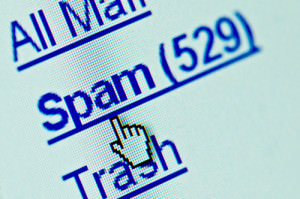
The first recorded act of spamming occurred in 1864.
When a group of British politicians received unsolicited telegrams promoting a local dentistry shop, they were furious. One of the recipients wrote a letter to the editor of The Times asking “by what right do they disturb me by a telegram which is evidently simply the medium of advertisement?” He proceeded to request a stop to this “intolerable nuisance”.
Flash forward nearly 100 years to 1978.
Gary Thuerk, a marketing manager at Digital Equipment Corp., sends a message promoting a new computer model to 393 users on ARPANET (the precursor to the internet) and becomes the “father of spam”. The reaction was almost completely hostile and Thuerk was harshly reprimanded.
So why, after so much backlash, does the sending of spam messages continue?
Because it works. As a result of his message, Thuerk’s company sold more than 20 computer systems for more than a million dollars apiece.
In the years since, spam has continued to be sent and continued to be fought.
The number of emails sent per day reached 2.4 billion in 2002, and in December 2003, George Bush signed the CAN-SPAM Act into law, establishing national standards for commercial emails and empowering the Federal Trade Commission to enforce them.
Email spam hit its peak in October 2008 when it accounted for 92 percent of all email traffic. 5.8 trillion (5,800,000,000,000) spam messages were sent that month.
What was once used as a simple way of promoting products and services has mutated into a means of spreading computer viruses and other malicious software. Spam is now a primary way of acquiring personal information and with this, threats of identify theft have become a major concern.
Today, Spam accounts for just under 70 percent of the world’s email. The battle is escalating; according to NBC News, new weapons are being developed to fight unwanted emails and legislators are debating stricter laws.
Until that happens, the masses must fight the good fight by hitting the Delete key.
For more information on the history of spam, check out the Great Moments in Marketing Spam History.
